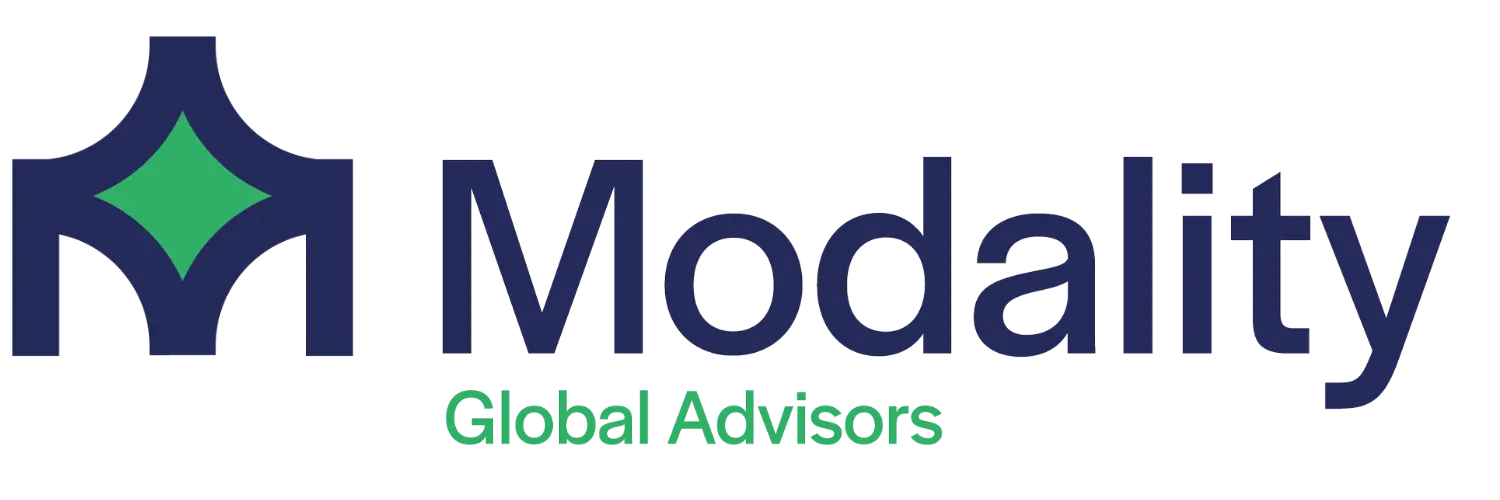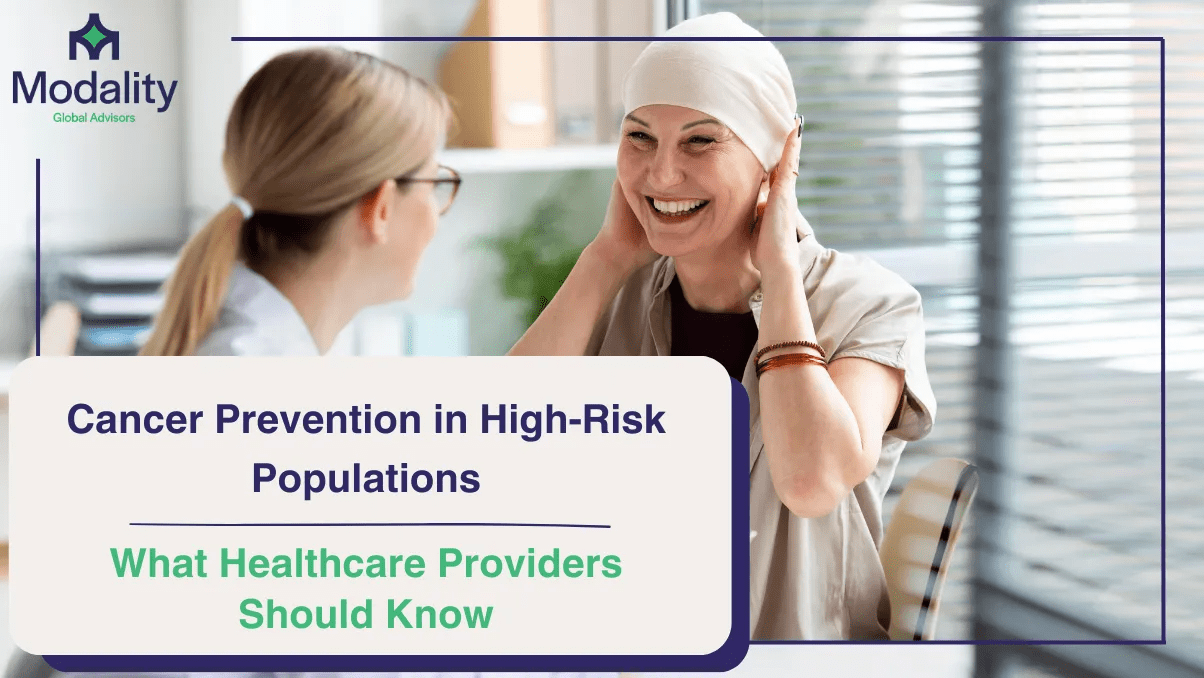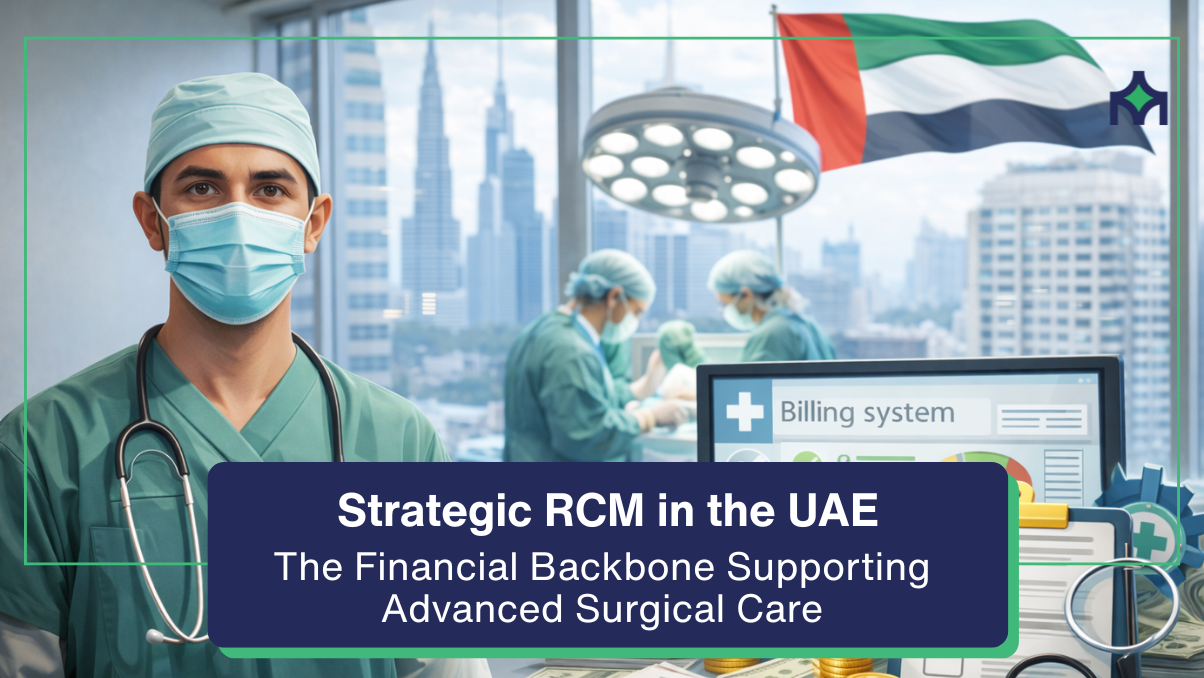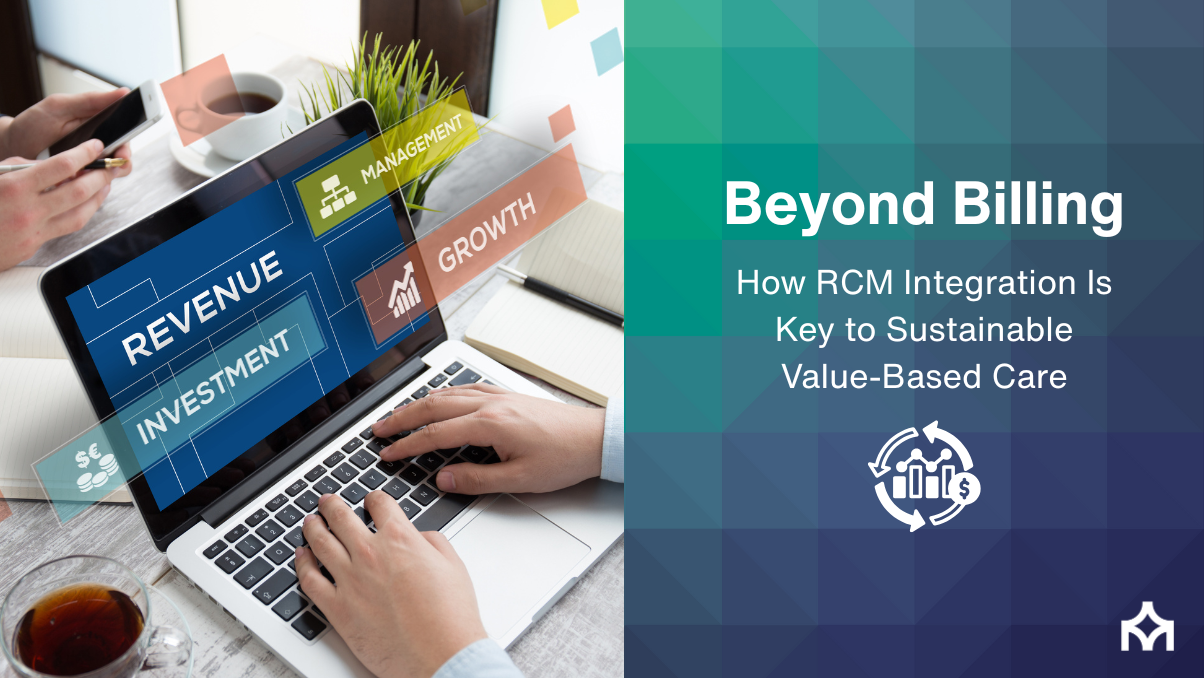Cancer Prevention in High-Risk Populations: What Healthcare Providers Should Know
Cancer Prevention in High-Risk Populations: From Identification to Impact
Cancer remains a leading cause of death in the U.S., with an estimated 1.9M new cases and 609,360 deaths projected for 2022. While everyone benefits from prevention, high-risk populations carry a disproportionate burden due to genetics, lifestyle, or environmental exposure. The opportunity for health systems is clear: identify risk early, tailor prevention, and measure results. Modality Global Advisors (MGA) helps providers turn this into a disciplined program.
• Larger preventable burden • Earlier detection window • Higher ROI on targeted outreach • Equity and access mandate
Who Is High Risk? Common Categories
- Genetic predisposition: Pathogenic variants (e.g., BRCA1/2, Lynch syndrome) or strong family history.
- Lifestyle factors: Tobacco, harmful alcohol use, low activity, poor diet; ~40% of cancers tied to modifiable risks.
- Environmental/occupational exposure: Asbestos, silica, benzene, radon, air pollution, UV exposure.
- Clinical history: Prior malignancy, premalignant lesions (e.g., adenomas), chronic hepatitis, IBD, HPV persistence.
- Demographic & social risk: Limited access, underinsurance, rural residence, language barriers, and other SDOH.
Provider Playbook: Targeted Prevention Strategies
| Strategy | What to Implement | Example Populations |
|---|---|---|
| Genetic counseling & testing | Risk assessment tools; cascade testing; navigation for positive results. | Breast/ovarian (BRCA), colorectal (Lynch), pancreatic (familial risk). |
| Enhanced screening protocols | Earlier starts & shorter intervals; modality choice (FIT/colonoscopy, LDCT). | Early CRC screening for strong family history; LDCT for heavy smokers. |
| Lifestyle interventions | Tobacco cessation, alcohol reduction, nutrition & activity coaching. | Communities with high smoking/obesity prevalence. |
| Vaccination & infection control | HPV vaccination; HBV vaccination; HCV screening & treatment pathways. | Adolescents/young adults (HPV); adults with viral hepatitis risks. |
| Environmental risk mitigation | Workplace screening; radon testing; UV protection campaigns. | High-exposure occupations; regions with elevated radon/UV index. |
| Longitudinal monitoring & navigation | Risk registries; reminders; nurse navigators; multilingual outreach. | Under-screened, rural, or limited-English-proficient populations. |
Program Design: Make It Work in the Real World
- Risk identification at scale: EHR prompts, risk scores, family history intake, and e-referrals to genetics.
- Equity-first operations: Mobile clinics, weekend hours, transportation vouchers, language services.
- Digital enablement: SMS nudges, patient portals, tele-genetics, at-home kits (FIT, HPV self-collection where permitted).
- Care pathways & SOPs: Positive-screen workflows, rapid diagnostic slots, multidisciplinary case review.
- Financing & access: Coverage navigation, charity care pathways, grant funding for outreach and vaccines.
Measure What Matters: Core KPIs
- Reach & equity: % eligible risk-assessed; screening completion by race/ethnicity, language, ZIP; no-show rate.
- Quality: Stage at diagnosis (shift to earlier stages), time from positive screen → diagnosis, guideline adherence.
- Outcomes: Vaccination uptake (HPV/HBV), tobacco quit rates, interval cancer rate, preventable ED/hospitalizations.
- Financial: Cost per screen, cost per cancer detected, payer mix improvement, grant/donation leverage.
How Modality Global Advisors Accelerates Impact
• Program design & process improvement (screening pathways, positive-result workflows)
• Cost reduction & funding strategy (grants, vaccine programs, outreach ROI)
• Revenue cycle optimization (auth/benefits, coding for preventive services, denial prevention)
• Compliance & risk management (privacy, genetic testing policies, documentation standards)
• Data & analytics (risk registries, KPI dashboards, equity reporting, population stratification)
Sources: Cancer Info Resources; peer-reviewed literature (PubMed); Cancer Progress Report. Statistics are indicative and should be localized to your patient population.
Talk to MGA about a high-risk cancer prevention blueprint
Pro tip: stand up a risk registry + navigator within 60 days; publish monthly equity-stratified screening dashboards to drive action.






